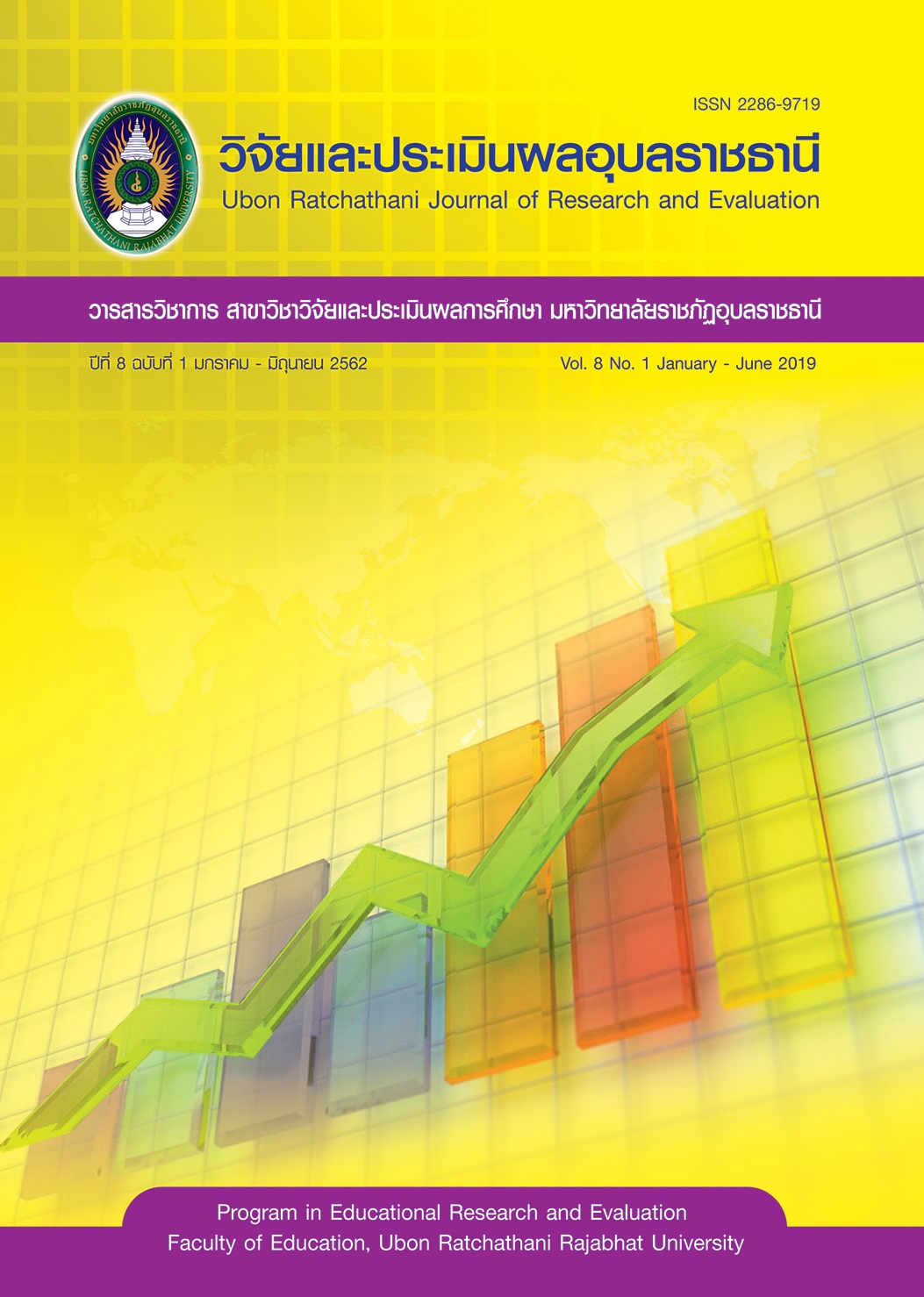An Assessment of the 21st Century Skills in Media Literacy of Grade 6 Students in Nonthaburi
Keywords:
Media Literacy, Assessment in the 21st Century SkillsAbstract
The purposes of this research were to evaluate and compare the 21th century skills in media literary of grade 6 students in Nonthaburi. The sample consisted of 435 grade 6 students in Nonthaburi randomed by multi-stage random sampling. The instrument was the media literacy test for grade 6 students. The statistics used in data analysis were general basic statistics, independent
t-test and one-way ANOVA.
The research findings were as follows:
- The maximum media literacy score was 27 while minimum was 5, and mean was 19.68 from 30. The media literacy mean score of students in large, middle, and small size of schools, were 20.59, 19.05 and 16.20 respectively. The media literacy mean score of students in the Office of Education Area 1 and 2 were 18.65 and 19.62 respectively. The media literacy mean score of students in public and private schools were 18.52 and 20.17 respectively. 57.87 percent of students had a media literacy score at moderate level, 26.62 percent of students were in good level and 15.51 percent in the level of unqualified media literacy.
- Students in difference districts were different in media literacy but unknown in any pairs of districts. Students in difference size of schools were different in media literacy. Students in the Office of Education Area 1 and 2 were different in media literacy. Students in public and private schools were different in media literacy with the statistical significance at .05. level.
References
Lortrakul, P. (2010). Watching and television programs literacy for children in the upper elementary school. Bangkok: Offset creation. [in Thai]
Office of Health Promotion Foundation (SSO). (2016). Situation and trend of media in Thailand. Retrieved January 10, 2016, from https://mediamonitor.in.th. [in Thai]
Office of National Broadcasting and Telecommunication Commission. (2015). What is media literacy? Essentials for consumers. Retrieved January 10, 2016, from https://bep.nbtc.go.th. [in Thai]
Prachanban, P. and Kornpuang, A. (2015). The development of the measurement instruments of the media literacy skills in the 21st century for secondary students. Phitsanulok: Faculty of education, Naresuan University. [in Thai]
Sangprateeptong, V. (2018). Guidelines for Assessment of Learning Outcomes in the 21st Century. Ubon Ratchathani Journal of Research and Evaluation, 7(1), 1-10.
Tunyong, C. (2019). Development of an instrument to assess media literacy of Prathom Suksa VI
students in Prachuap Khiri Khan Province (Master's thesis, department of Education). School of Education, Sukhothai Thummathirat Open University, Nonthaburi. [in Thai]
Virunrapan. K. (2013). ICT literacy: Interactive foundation for Thai development. Bangkok:
Asia-Pacific. [in Thai]
Wipulakorn, P. (2011). Media literacy: Concepts and theories. Bangkok: Pinto Publishing.
Yenchobok, P. (2009). Decrypt the idea for media literacy: Media literacy guide. Bangkok: Offset Creation. [in Thai]
Downloads
Published
How to Cite
Issue
Section
License
1. บทความที่ตีพิมพ์ในวารสารนี้ได้มีการตรวจสอบการลอกเลียนงานวรรณกรรมแล้ว ไม่เกินร้อยละ 25
2. บทความที่ตีพิมพ์ในวารสารนี้เป็นข้อคิดเห็น ข้อค้นพบของผู้เขียนบทความ โดยผู้เขียนบทความต้องเป็นผู้รับผิดชอบต่อผลทางกฎหมายใด ๆ ที่อาจเกิดขึ้นจากบทความนั้น ๆ
3. บทความ ข้อมูล เนื้อหา รูปภาพ ฯลฯ ที่ได้รับการตีพิมพ์ในวารสารวิจัยและประเมินผลอุบลราชธานี ถือเป็นลิขสิทธิ์ของวารสารวิจัยและประเมินผลอุบลราชธานี หากบุคคลหรือหน่วยงานใดต้องการนำทั้งหมดไปเผยแพร่ต่อหรือเพื่อกระทำการใดๆ จะต้องได้รับอนุญาตเป็นลายลักษณ์อักษรจากวารสารวิจัยและประเมินผลอุบลราชธานีก่อนเท่านั้น และจะต้องมีการอ้างอิงวารสารวิจัยและประเมินผลอุบลราชธานี ฉบับนั้น ๆ ด้วย






